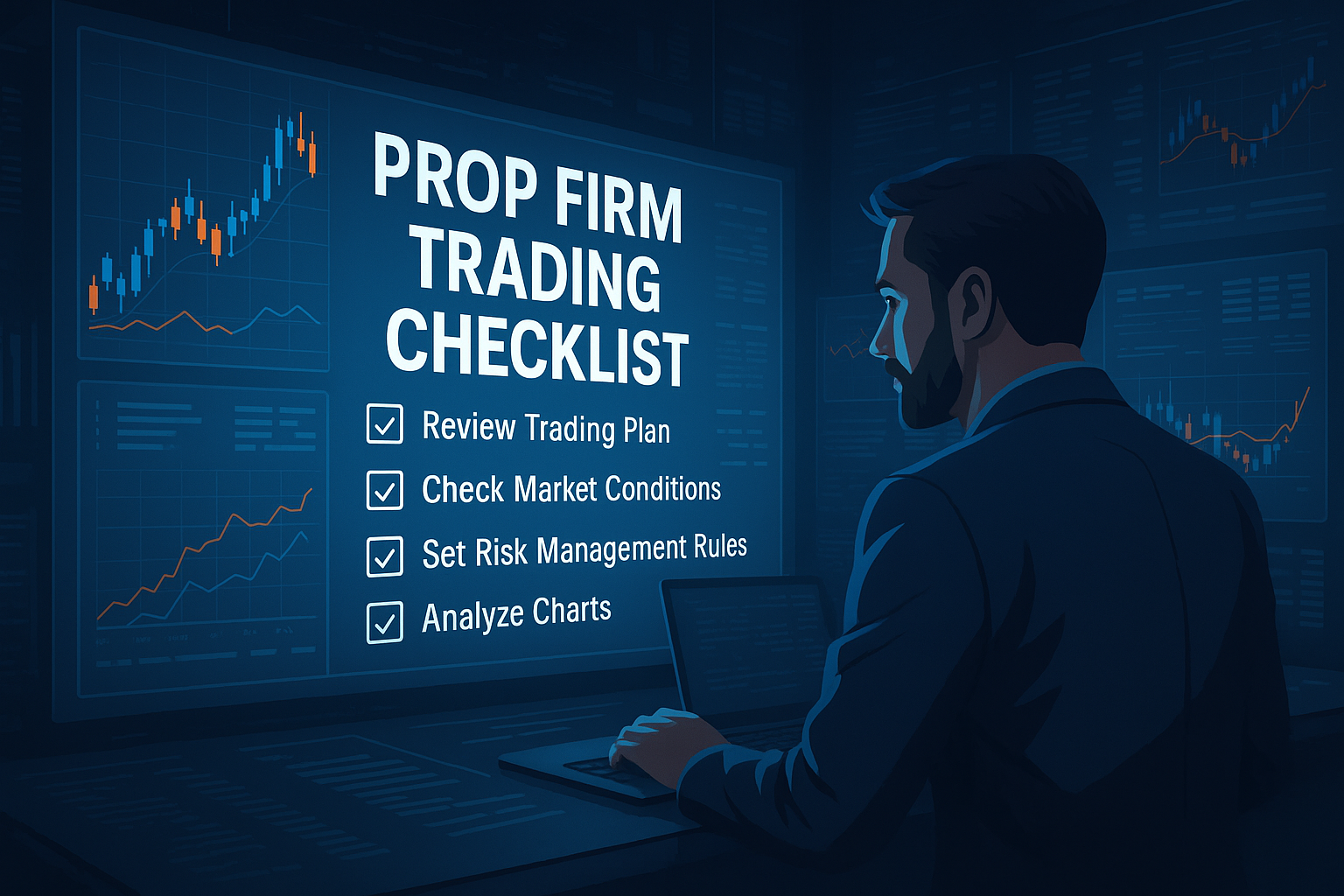Pre-Trade Checklist for Prop Firm Traders
Entering a trading session without preparation is like flying blind. For traders working with proprietary firms, the stakes are even higher. That’s why having a clear and structured prop firm trading checklist can make all the difference between consistent success and avoidable failure.
Whether you’re in the evaluation stage or already trading a funded account at Larsa Capital, this guide outlines essential steps to prepare your mind, platform, and strategy before each session begins. Let’s break down the key items you should never skip.
Why a Pre-Trade Checklist Matters in Prop Trading
Success in prop trading isn’t just about skills—it’s about consistency. Funded traders must operate within strict risk parameters, avoid disqualifying actions, and maintain psychological discipline. A checklist helps standardize your preparation process and prevents emotional or careless mistakes.
Moreover, it sets a professional tone for each session. After all, you’re not just trading for yourself; you’re managing capital on behalf of the firm.
✅ Essential Elements of a Prop Firm Trading Checklist
Below are the core components of an effective checklist, each targeting a key area of preparation. These steps ensure that you’re mentally and technically ready to trade within your firm’s rules and risk limits.
1. Review Prop Firm Rules and Limits
Before placing any trades, ensure you’re aware of:
-
Daily drawdown and overall loss limits
-
Allowed instruments and position sizes
-
Weekend holding policies
-
News trading restrictions
At Larsa Capital, for example, violating rules like trading during restricted periods or exceeding risk limits can lead to challenge failure. Reviewing these each day reduces the chance of oversight.
2. Check Economic Calendar
Unexpected market volatility can ruin even the best setups. That’s why checking the economic news calendar before trading is a must.
-
Filter by your trading instruments (e.g., USD, EUR, Gold, Indices)
-
Identify high-impact events
-
Decide whether to stay out of the market or adjust risk during certain hours
This step alone can protect you from account violations, especially when your firm excludes profits generated near major news events.
3. Review Your Trading Plan
Every session should align with your overall strategy. Go over the following:
-
Preferred timeframes
-
Entry/exit rules
-
Risk-per-trade (e.g., 0.5% or 1%)
-
Trade management strategy (e.g., trailing stop, partial take-profit)
Reinforcing your plan before the session boosts discipline and helps avoid impulsive decisions later.
4. Conduct Technical and Market Analysis
Your prop firm trading checklist should include technical preparation. Start by:
-
Marking key support/resistance zones
-
Drawing trendlines or channels
-
Identifying market structure: Is it trending or ranging?
-
Highlighting major supply/demand levels
Also consider broader market sentiment and inter-market correlations. For instance, a risk-on environment may impact both equities and forex behavior.
5. Define Your Trading Session Goals
Traders often fall into the trap of “overtrading” when they have no daily objective. To prevent this, define:
-
Maximum number of trades per session
-
Profit target (if applicable)
-
Stop trading rules after a loss
While goals should be flexible, having limits helps prevent revenge trading or deviation from your system.
6. Perform Platform and Chart Setup
Make sure everything is working smoothly:
-
Log into your trading platform (Match-Trader at Larsa Capital, for example)
-
Verify correct account and leverage settings
-
Load chart templates and indicators
-
Check your internet connection
-
Close unrelated apps to avoid distractions
A technical glitch at the wrong moment can cost you both money and eligibility—especially during funded stages.
7. Prepare Mentally and Physically
Trading is not just analytical—it’s emotional. Check in with yourself:
-
Did you sleep well?
-
Are you distracted, anxious, or impatient?
-
Have you eaten or exercised?
Even the best setups fail under the influence of emotional fatigue. Take 2–3 minutes to practice deep breathing or visualization before beginning.
📋 Sample Prop Firm Trading Checklist
Here’s a concise template you can use daily:
| ✅ | Item |
|---|---|
| 🔲 | Reviewed firm rules (risk, timing, news) |
| 🔲 | Checked today’s economic calendar |
| 🔲 | Revisited trading plan and setup criteria |
| 🔲 | Completed technical analysis on key assets |
| 🔲 | Defined max trades and loss limits for day |
| 🔲 | Tested platform, indicators, and charts |
| 🔲 | Cleared distractions and stabilized mindset |
You can print this or turn it into a digital checklist to use every day before your session.
The Role of Discipline in Your Checklist Routine
A checklist is only powerful when followed consistently. Skipping steps on good days increases the chance of failure on bad ones. While it might seem repetitive, this routine builds the discipline required by top traders.
In the world of proprietary trading, funding firms look for consistency and professionalism. Using a checklist signals that you’re serious about performance and risk management.
Adjusting the Checklist for Evolving Strategies
As your trading skills improve, your routine should evolve too. Maybe you begin to:
-
Focus on fewer pairs for precision
-
Trade only during specific sessions (like London open)
-
Add journaling or post-session review steps
Feel free to modify your checklist monthly. What matters is keeping it aligned with your current system and account type.
🔄 Final Thoughts on Using a Prop Firm Trading Checklist
To succeed in a competitive environment like proprietary trading, preparation is non-negotiable. A solid prop firm trading checklist helps you avoid preventable errors, stay compliant with firm rules, and maintain emotional control.
At Larsa Capital, traders who use structured routines tend to outperform those who don’t. Start building your checklist today—and make it your daily edge in the market.

